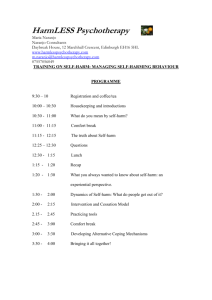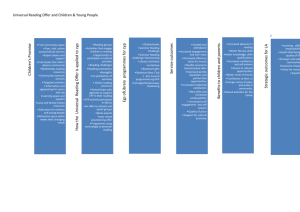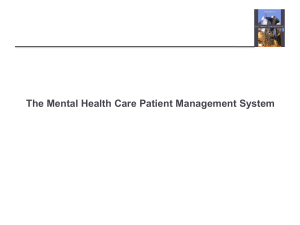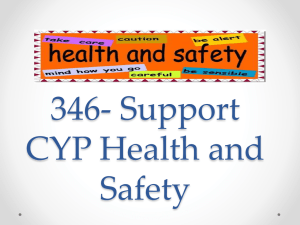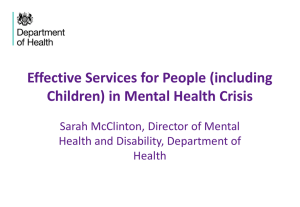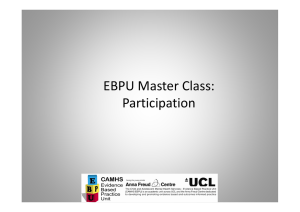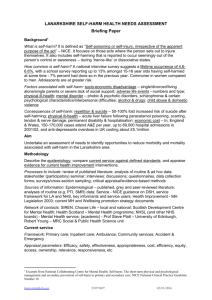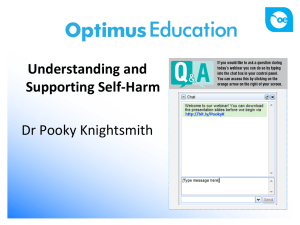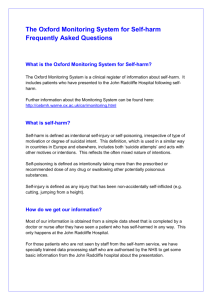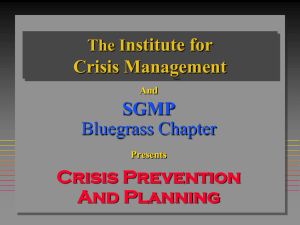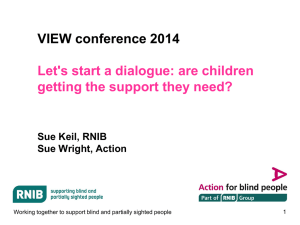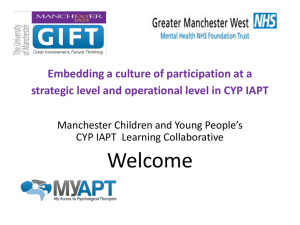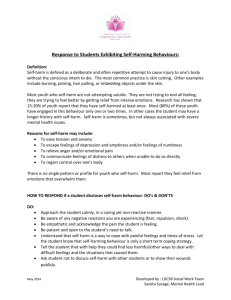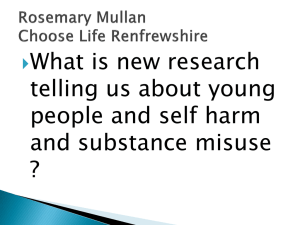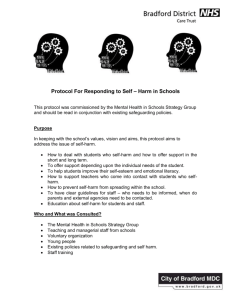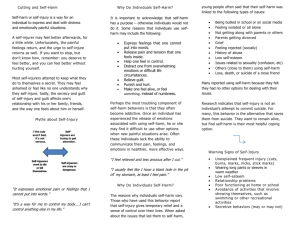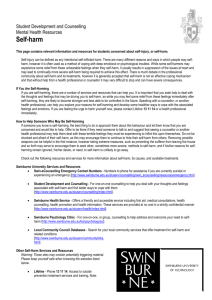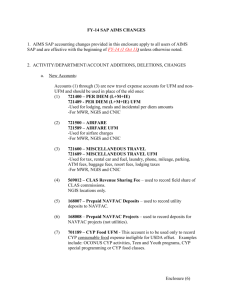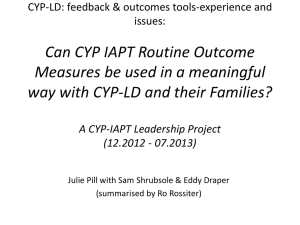WSP2 Effective services for people in mental health crisis
advertisement
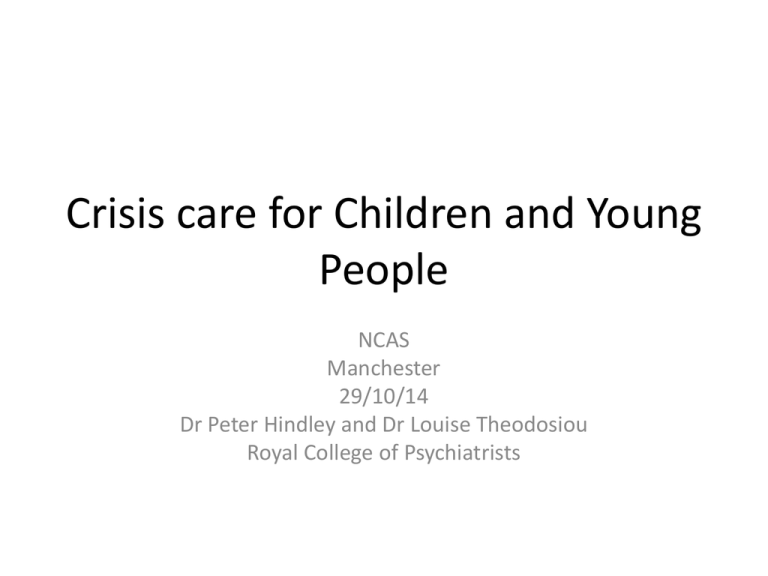
Crisis care for Children and Young People NCAS Manchester 29/10/14 Dr Peter Hindley and Dr Louise Theodosiou Royal College of Psychiatrists Self-harm Significant increase in presentations at Emergency Departments ≈ x3 over past 5 years Increase in young people reporting self-harm and suicidal thoughts to Childline 41% 20122013 Young people who commit suicide often have contact with services prior to committing suicide (LAAC Joint Planning Group 2006) The Canary in the Mine Increasing rates of self-harm are the canary in the mine Local Authorities under severe pressure Difficult decisions re funding leading to loss of universal and targetted services Growing inequality and loss of opportunity for young people Social media Not all crises involve self-harm Severe behavioural disturbance with breakdown of care Children with neurodevelopmental disorders and challenging behaviour Intoxication with drugs/alcohol Severe physical illness with delirium The picture in Manchester 16–17 CMHT Anecdotal trends demonstrate an increase in rates of emergency presentations and young people presenting later in their illness journey Referrals from Tier 1 have reduced, referrals from GPs have increased Referral rates of males are significantly lower than females. Crisis Care Concordat and Children and Young People Less than 40% of CAMH services have rapid access through crisis pathways (CAMHS Benchmarking 2013) 958 children and young people held under S136 2012-2013 >100 in Police cells (Howard League 2014) 37/52 mental health trusts do not have specialised places of safety for CYP (Howard League 2014) Crisis Care Concordat and Children and Young people Develop effective crisis care pathways for all children and young people Develop network of CYP places of safety for safe management of children and young people detained under S136 Promote work between Police/social care/mental health/child health for appropriate use of S136 with CYP Develop Standards for S136 and CYP How to prevent crises or intervene early? Early intervention and resilience building services to prevent crises – more cost effective Increased awareness in all services about signs of impending crisis – catch crises early Better linkage between physical health- mental health- social care – Police- youth offending at point of crisis Reduce inequality and improve opportunity Enhance communication at transition points between school and college, child and adult services
